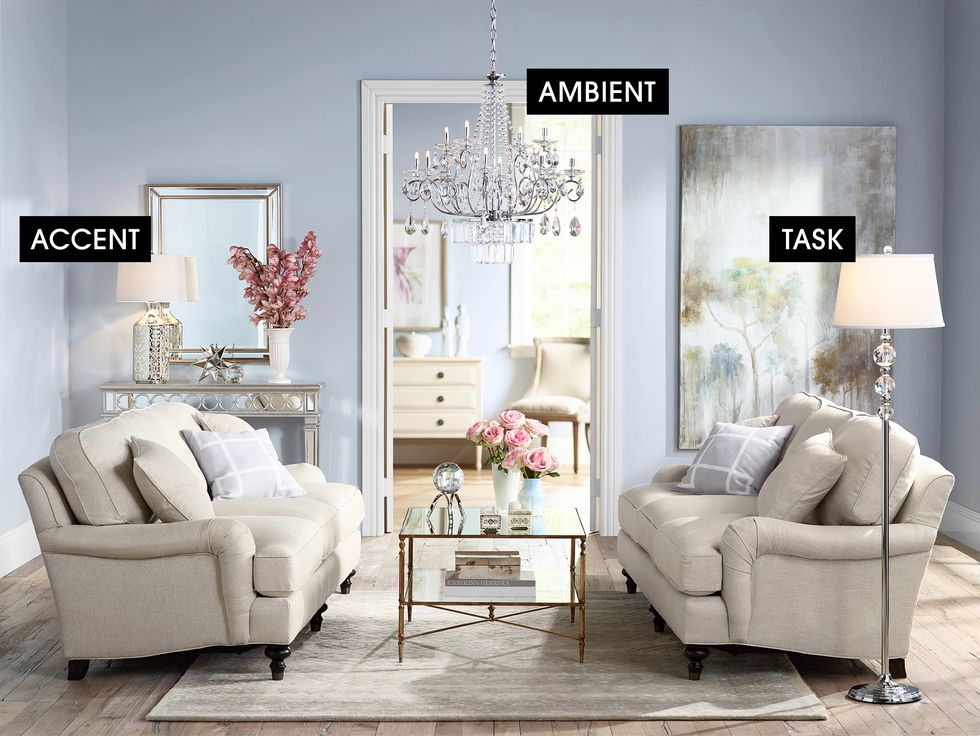
What Are the 3 Types of Lighting & How to Use Them
|
|
Time to read 7 min
Free shipping for $500+ orders to Sydney Metro
|
|
Time to read 7 min
Lighting design plays a key role in creating the right mood and adjusting the ambiance of interior spaces. Proper lighting makes all work easier and changes the mood of a space. Without good lighting, your environment and carefully chosen interior design elements can look dull and uninviting. Inadequate lighting affects the ambience and even the perceived size of the room.
There are three basic types of lighting that can work together to illuminate a room based on function and style:
An excellent lighting plan combines all three types to create a welcoming and functional space. Ambient lighting provides overall illumination, while task and accent lighting are used for more specific purposes.
Table of Content
Ambient lighting, also known as general lighting, is one of the most common types of lighting. It provides a soft glow that blankets your space with enough light to navigate safely and comfortably without causing harsh glare. Ambient light is similar to the natural light within a room, except you create it artificially with the goal of illuminating the space as evenly as possible.
While ambient light helps you move around safely, it is not ideal for tasks that require focused task lighting or for highlighting specific objects.
Colour temperature and Colour Rendering Index (CRI) are important factors in ambient lighting. Colour temperature is measured in degrees Kelvin and ranges from warm to cool:
For residential ambient lighting, aim for a CRI of at least 80. The higher the CRI (up to 100), the more accurately colours will appear, resulting in a space that looks more natural and vibrant.
Our Favourite Ambient Lights
Task lighting provides focused light for specific activities such as reading, cooking, grooming, or doing homework. It is meant to help you see clearly when engaging in activities that require more illumination than ambient lighting can provide. However, to be most effective, task lighting should be used alongside ambient lighting to create contrast.
Task lighting allows you to strategically place appropriate light sources right where they are needed most. Some key areas to focus on include:
To reduce eye strain and increase visual clarity, task lighting should have a high CRI of 90 or above. For most residential task lighting applications, a colour temperature between 3000K-5000K is ideal, though this comes down largely to personal preference and the specific task at hand:
Our Favourite Task Lights
Accent lighting adds drama and flair to a room by drawing attention to specific objects or architectural features. It is used to create visual interest by highlighting artwork, sculptures, plants, bookcases, textured walls, or other decorative elements.
To be effective, accent lighting should direct at least three times as much light on the focal point compared to the ambient light in the surrounding area. However, the goal is to draw attention to the object itself, not the light source.
When it comes to accent lighting, the CRI should be as high as possible (95+) to allow the colour and detail of the highlighted object to shine through. In terms of colour temperature, a good rule of thumb is to match the colour temperature to the accent piece itself:
Our Favourite Accent Lights
The kitchen is a hub of activity that requires a combination of ambient, task, and accent lighting. Recessed lights can provide overall ambient lighting, ensuring the space is well-lit and easy to navigate. Task lighting is crucial in the kitchen, particularly in areas where you prepare food, cook, and clean. Under-cabinet lights illuminate countertops, while pendant lights over an island or peninsula provide focused light for cooking and dining. To add a decorative touch and highlight specific features, like a unique backsplash or decorative items, use accent lighting such as strip lights or puck lights.
Lighting is crucial in the bathroom, as it's where you start and end your day. Prioritize task lighting around the vanity area, where you need bright, even light for grooming and applying makeup. Sconces on either side of the mirror or a light bar above the mirror can provide shadowless illumination. For ambient lighting, consider a ceiling fixture or recessed lights with a dimmer switch to create a relaxing atmosphere for bathing. In larger bathrooms, you may also want to include accent lighting to highlight decorative features or create a spa-like feel.
A home office requires a well-lit, productive environment. Task lighting is essential for reducing eye strain and ensuring you can focus on your work. Use a desk lamp with adjustable brightness and position it to minimize glare on your computer screen. The lamp should be placed to the side of your work area to avoid casting shadows. For ambient lighting, a ceiling fixture or floor lamp can provide overall illumination, making the space feel more inviting. If you have bookshelves or artwork in your office, consider adding accent lighting to showcase these features and create visual interest.
Creating the perfect lighting plan for your home involves understanding the three main types of lighting – ambient, task, and accent – and how to use them effectively in each room. By layering these different types of lighting and considering the specific needs and functions of each space, you can create a comfortable, inviting home that is both functional and beautiful.
Remember to consider factors such as color temperature and CRI when selecting light fixtures, and don't be afraid to experiment with different lighting products to find the perfect balance for your home. With a little planning and creativity, you can transform your living spaces and elevate your home's overall design.








